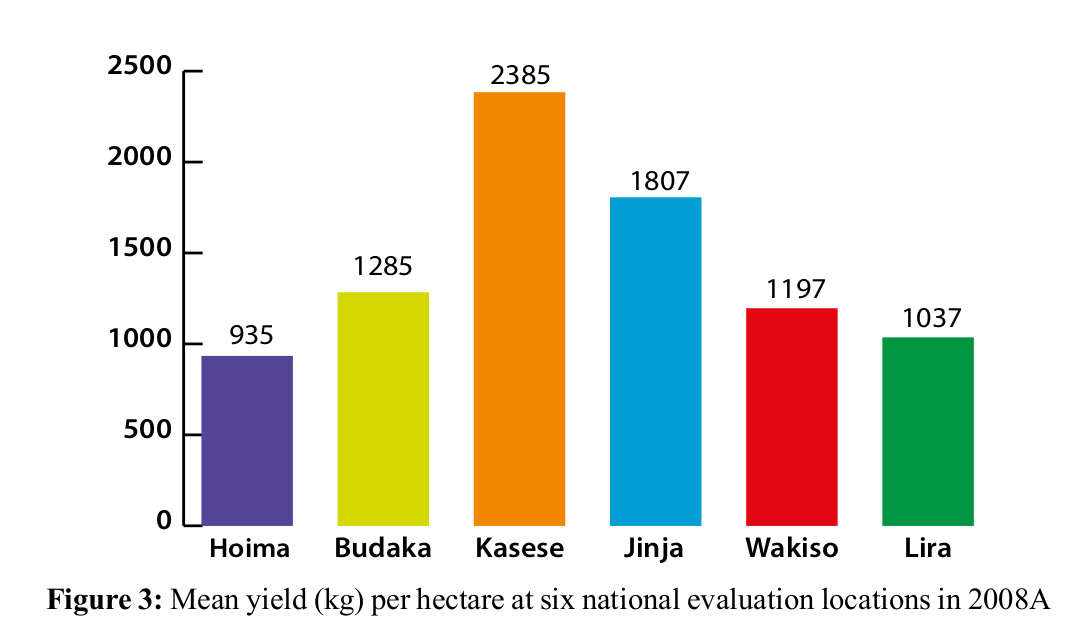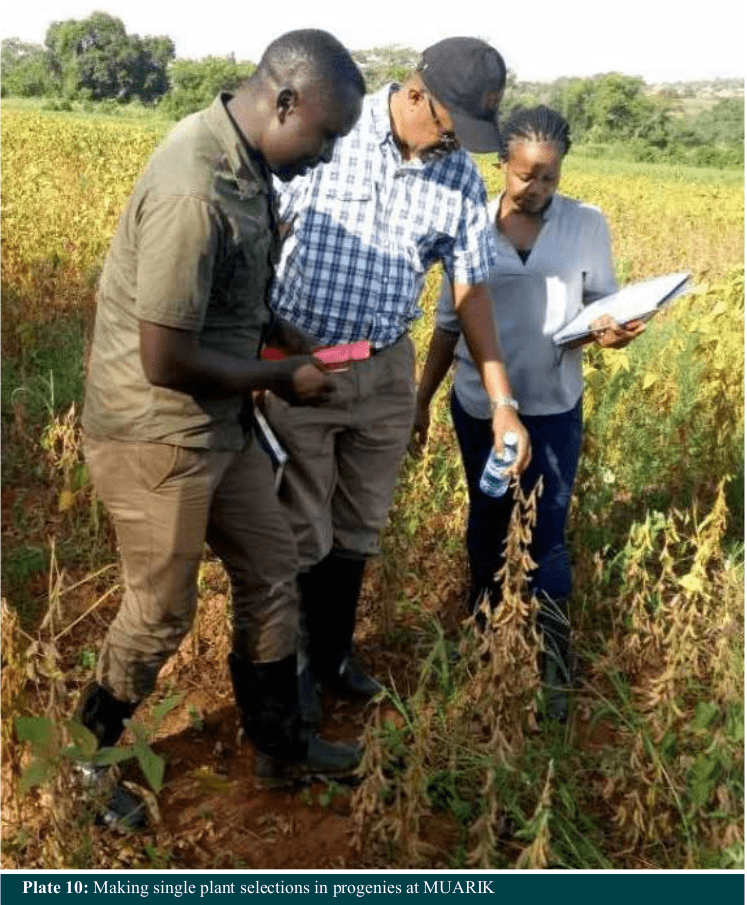Progeny Testing
Progeny Testing
The selection procedure used at Makerere Soybean centre is a modified single seed descent method, where a single pod is used instead of a single seed. Single plant selections are made from F5 generation stage on words depending on the trait of interest.
Breeding for pest resistance
The green stink bug (Nezara viridula) has been a major pest to soybean production in the country. The pest damages developing pods and significantly affects grain yield. The effects of the stink bug are usually seasonal although the pest is constantly present in many soybean growing areas. In the country, direct efforts to breed for resistance to the stink bug have not been made. Further research needs to be conducted to quantify the effects of the pest as well as devise management strategies. Groundnut leaf miners are now a major challenge to soybean farmers in Uganda. These pests are also seasonal, and incidences have tended to be higher during the second rains of the year in Uganda. Management options have mainly been through the application of insecticides. None of the currently released varieties is resistant to groundnut leaf miners. Recent screening work has identified four genotypes with substantial resistance to the pest which are most severe in Eastern Uganda, during the second growing season.
Breeding for drought tolerance
Drought is undoubtedly a serious production constraint for smallholder farmers in most developing countries who grow soybean under rain fed farming systems. In Uganda, yield variations between seasons and locations have been to a great extent attributed to the amount of moisture available to the plant. Figure 3 shows the effect of drought on yield results obtained from testing sites which were not irrigated in comparison to the Mubuku Irrigation Scheme in Kasese, western Uganda. The mean yield difference range of the irrigated and non irrigated trials was 578 -1450 Kg ha-1, equivalent to 24-61% yield benefit in the irrigated plots. Even though these comparisons require further controls, the yield difference was a clear indicator that adequate moisture is critical for maximizing soybean productivity. Breeding for drought tolerance in soybean is traditionally difficult to achieve due to the crop’s high moisture requirement for optimal growth and yield. Hence, effect of drought was inadvertently noted in the other locations compared to Mubuku Irrigation Scheme, whose moisture supply is always adequate because of flood irrigation. A decade of observations suggest the second growing season is better for soybean in Uganda, which may suggest better rainfall distribution for soybean growth. However, ongoing climatic changes can greatly affect rain-fed agriculture, both positively and negatively regardless of traditional cropping seasons in Uganda. This calls for targeted efforts torwards selecting drought tolerant soybean varieties.


